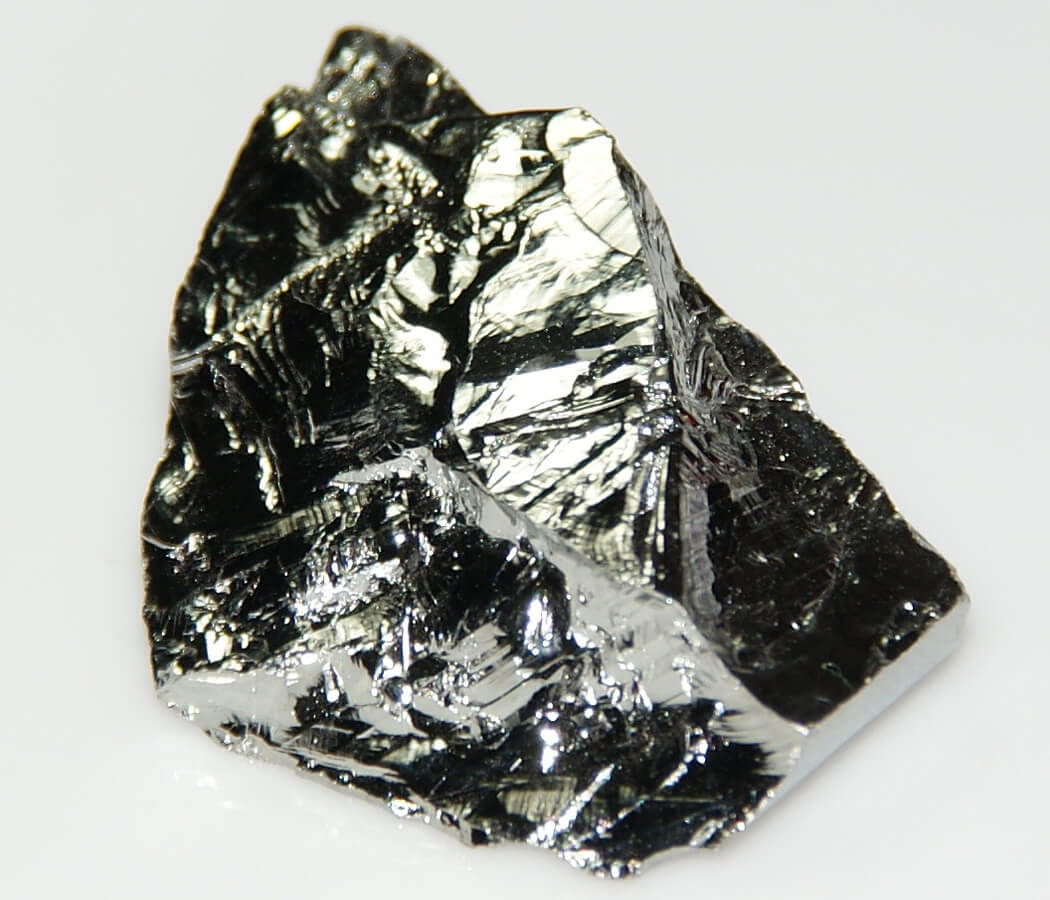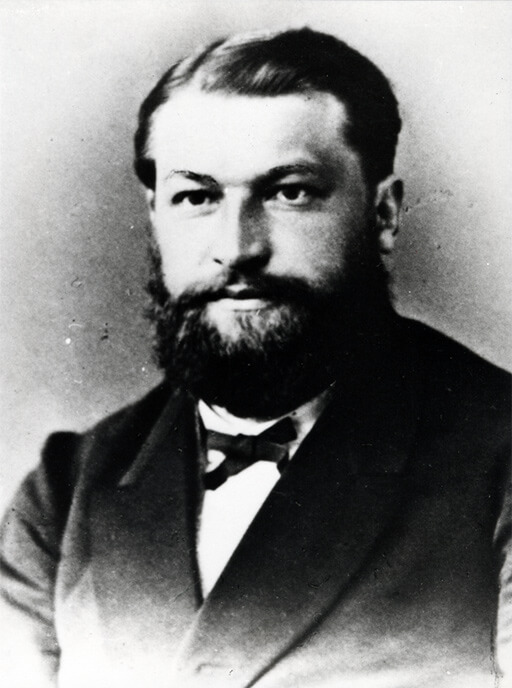Learn Everything About the
Element Germanium

Learn Everything About the Element Germanium


Name: Germanium
Symbol: Ge
Atomic Number: 32
Mass fraction of the earth’s shell: 5,6 ppm
Density: 5,323g cm-3
Mohs hardness: 6,0
Schmelztemperatur: 938,3 °C
Melting Point: 2.830 °C
Electrical Conductivityt: 1,45–2,2 A·V−1·m−1
Germanium belongs to the semimetals in the periodic table.

Name: Germanium
Symbol: Ge
Atomic Number: 32
Mass fraction of the earth’s shell: 5,6 ppm
Density: 5,323g cm-3
Mohs hardness: 6,0
Schmelztemperatur: 938,3 °C
Melting Point: 2.830 °C
Electrical Conductivityt: 1,45–2,2 A·V−1·m−1
Germanium belongs to the semimetals in the periodic table.
CHARACTERISTICS
Germanium is one of the rarest metals on earth. The shiny silver element melts at just under 940 °C and boils at 2,820 °C. It is considered a semiconductor, comparable to silicon. In the periodic table, germanium belongs to the group of semimetals, but according to a more recent definition it is also called a semiconductor. Elemental germanium is very stable in air, but quite brittle.

Germanium-Kristall. Bild: wikimedia / Jurii CC-BY 3.0
Amazing density anomaly
Its density anomaly never ceases to amaze scientists: the density of germanium is lower in the solid state than in the liquid state, so the metal weighs more in the liquid state than in the solid state.
Hydrochloric acid, potassium hydroxide solution and dilute sulfuric acid do not react with germanium. In alkaline hydrogen peroxide solutions, concentrated hot sulfuric acid and concentrated nitric acid, however, germanium is dissolved to form germanium dioxide hydrate. According to its position in the periodic table, it stands between silicon and tin in its chemical characteristics.
- By industry, germanium is counted among the technology metals – those metals that are of particular importance for technological innovations.
- In other contexts, germanium is also referred to as a Strategic Metal, underlining its relevance to a country’s economy.
- Germanium is also one of the critical raw materials, where it is classified alongside rhenium and antimony as highly critical, meaning strategically important but only available in limited quantities.
- By industry, germanium is counted among the technology metals – those metals that are of particular importance for technological innovations.
- In other contexts, germanium is also referred to as a Strategic Metal, underlining its relevance to a country’s economy.
- Germanium is also one of the critical raw materials, where it is classified alongside rhenium and antimony as highly critical, meaning strategically important but only available in limited quantities.
HISTORY

It is well known that Clemens Winkler, professor of inorganic chemistry at the Freiberg Mining Academy, announced his discovery of germanium in early February 1886. How this came about, however, is less widely known. Winkler’s colleague Albin Weisbach discovered a mineral similar to silver pyrites near Freiberg in September 1885, which he named argyrodite. On October 15, Weisbach had already determined the composition of mainly silver and sulfur and had a crystal model built from wood.
Weisbach passes on about five kilograms of the ore to Clemens Winkler. The latter carries out a comprehensive analysis within only a few months. When he examines the proportions, he finds a loss of six to seven percent in addition to silver, sulfur and various impurities. With the help of the Freiberg digestion method, he was finally able to isolate a previously unknown element for this missing mass. He named it after his homeland, Germany (lat. Germania): , in reference to gallium and scandium: Germanium.
With the discovery of germanium with atomic number 32, Winkler confirmed a theoretical assumption of Dmitri Ivanovich Mendeleev, the inventor of the periodic table of the elements. In 1871, he had predicted an element with the properties of germanium and named it eka-silicon. After his discovery, Winkler contacted Mendeleev by letter. Six years later, in 1894, the two met for the first time.
OCCURRENCE & EXTRACTION
Germanium is widespread, but occurs in very low concentrations. The Clarke value, or average content in the earth’s crust, is just 1.5 g/t. In nature, it mostly occurs as a sulfide (thiogermanate) and is often found as a companion in copper and zinc ores (Mansfeld copper shale). The most important minerals are argyrodite, canfieldite, germanite and renierite.
Germanium in esotericism
Some plants accumulate germanium. In esotericism theses circulate that the metal serves the plants as a “defense substance against viruses”. Based on this idea, germanium is also used as an “active ingredient” in homeopathy.
Germanium can be extracted above all from the flue dust of zinc ore processing, because it contains germanium oxide. The flue dust is first dissolved in sulfuric acid, thus enriching the germanium in the solution. Then the dissolved germanium oxide is precipitated as chloride. The germanium chloride is then distilled. Hydrolysis then leads back to the oxide, which is reduced with hydrogen to form germanium. High-purity germanium can then be obtained, for example, by the zone smelting process.

Argyrodit. Bild: wikimedia / rock currier, CC-BY 3.0
Areas of application of germanium
Areas of application of germanium
For a long time, germanium was the leading material in electronics. Here it was almost superseded by the cheaper silicon, a development which is again slightly declining with the increasing use of silicon-germanium transistor materials in computer chips.
Germanium (in combination with silicon) can also serve as a wafer in the production of gallium arsenide thin-film solar cells as well as a semiconductor in tandem solar cells. However, the three most important areas of application for germanium are fiber optics, infrared optics and PET bottle production:
Fiber OPTICS
Learn more
The Internet, with today’s demands on data volume and speed, would hardly be possible without germanium. In order to be able to transport data over many miles using light waves without losses, the strength and properties of the light wave must remain constant. Otherwise, the analyzability of the data is jeopardized. For this purpose, the optical waveguide must not only be absolutely pure, but the undisturbed, controlled guidance of the light wave from A to B must be guaranteed. This is achieved by creating a discrepancy in the optical densities (the refractive index) of the light-guiding fiber core and its cladding.
This is where germanium becomes relevant. In optical waveguides, which are bundled into so-called fiber optic cables in Internet communications technology, germanium dioxide ensures a higher refractive index and lower scattering in the inner fiber core. The cladding of the light-carrying fiber core is usually made of fused silica, which has a low refractive index. The result is total reflection. The propagation of light waves is prevented. This enables reliable, fast and wide guiding of the light waves through the cable.
Special Lenses
Learn more
Germanium has a high density, is relatively hard, transparent to infrared light and blocks UV radiation. Of all infrared emitters, germanium has the lowest optical dispersion, but at the same time has a high refractive index. This makes it attractive for the manufacture of microscopes and wide-angle lenses, but especially infrared and thermal lenses.
Infrared and thermal lenses containing germanium are most frequently used in the construction of thermal imaging cameras and night vision devices. They are used, for example, by the military, the police, the fire department and hunters. Another area of application is the creation of thermal images in the construction of particularly sustainable, energy-efficient houses. In medicine, thermal lenses are used for non-invasive diagnostic methods, and in the automotive industry for night vision assistants.
PET-bottles
Learn more
In polyester chemistry, germanium dioxide is used as a catalyst in the production of certain polyester fibers and granules used in drinking bottles and food packaging. Germanium dioxide increases transparency here. On the Japanese market in particular, the raw material is used specifically for recyclable PET bottles (PET = polyethylene terephthalate). Titanium is also increasingly used in Japan. In Germany, about one third of the annual germanium requirement is used for PET drinking bottle production.
In addition to germanium dioxide, antimony trioxide is often used as a catalyst. However, germanium oxide has the advantage over antimony trioxide that, unlike the heavy metal antimony, it is not toxic. Catalysts always remain in the material during PET material production, and small amounts pass into the beverage or packaged food. This makes germanium oxide much more attractive than antimony trioxide, but it is also more expensive.
Latest News around germanium
Technology and Raw Materials: India and the UK Strengthen Cooperation
Government representatives agree to work together more closely in strategic sectors such as rare earths and renewable energies.
Raw Materials Supply in the EU: Significantly More Research and Innovation Needed
High investments and international cooperations: Fraunhofer study shows what is required to achieve the goals of the Critical Raw Materials Act.
China: Gallium and Germanium Exports Showing Differing Trends
Export restrictions for the two technology metals, gallium and germanium, were imposed in China almost one year ago.
China Exports More Gallium, Less Germanium
The export of gallium from China increased significantly in April compared to the previous month.
China: Exports of Gallium and Germanium Remain Below Last Year’s Level
Exports of gallium and germanium from China continue to remain below last year’s level.
Gallium and Germanium: Chinese Exports Decline in January-February
The export of gallium and germanium from China declined in the first two months of the year.




